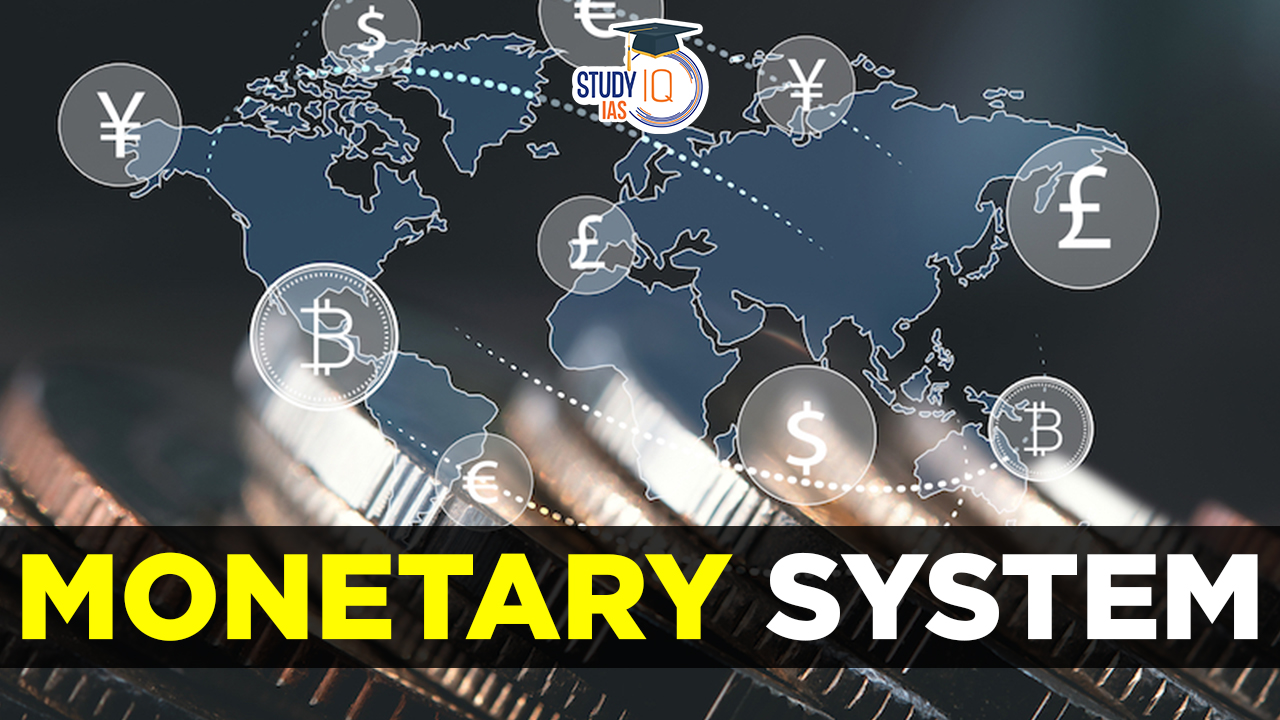Table of Contents
Monetary System
A Monetary System is a set of policies, regulations, and institutions that govern the supply and circulation of money in an economy. It includes the mechanisms for creating and controlling the money supply, as well as the means of exchange and the institutions that facilitate monetary transactions.
The Monetary System typically includes a central bank, which has the responsibility of implementing monetary policy and regulating the money supply, and a currency, which serves as the standard of value and medium of exchange. The stability of the monetary system is essential for a healthy economy, as it ensures that the money supply remains stable, inflation is kept in check, and economic growth is sustained over the long term.
Read about: Kuznets Curve
Types of Monetary System
Here are the different Types of Monetary System along with their brief description:
| Monetary System | Description |
| Commodity Money | A monetary system where money is made of a valuable commodity, such as gold or silver, and has intrinsic value. |
| Fiat Money | A monetary system where money is not backed by any physical commodity but is recognized by the government as a legal tender. |
| Representative Money | A monetary system where paper currency represents a physical commodity, such as gold or silver, is stored in a bank vault and can be exchanged for the commodity at any time. |
| Credit Money | A monetary system where credit is created by banks and financial institutions through loans and deposits and is used as a medium of exchange. |
| Electronic Money | A monetary system where money exists only in electronic form and is exchanged through electronic networks, such as debit cards, credit cards, and mobile payments. |
| Cryptocurrency | A digital or virtual currency that uses cryptography for security and operates independently of a central bank. It is decentralized, meaning it is not controlled by any government or financial institution and operates through a distributed ledger technology. |
Read about: Green Accounting
Monetary System in India
The Monetary System in India is based on a fiat currency, which is regulated by the Reserve Bank of India (RBI). The Indian rupee (INR) is the official currency of India and is issued and controlled by the RBI. The monetary policy in India is formulated by the RBI, which is responsible for managing the money supply, inflation, and interest rates.
The RBI also regulates the banking system in India, which includes commercial banks, cooperative banks, and regional rural banks. The Indian banking system is largely dominated by public sector banks, but there are also private sector banks, foreign banks, and small finance banks operating in the country.
The Indian financial system is also regulated by several other institutions, including the Securities and Exchange Board of India (SEBI), the Insurance Regulatory and Development Authority (IRDA), and the Pension Fund Regulatory and Development Authority (PFRDA). These institutions regulate the capital markets, insurance sector, and pension funds, respectively.
Read about: Phillips Curve
International Monetary System
The International Monetary System refers to the framework of rules, institutions, and procedures that govern international trade and finance among countries. It provides a mechanism for countries to exchange currencies and settle payments for goods and services across borders.
The International Monetary System has evolved over time, from the gold standard system in the 19th and early 20th centuries to the Bretton Woods system established in 1944, to the current system of floating exchange rates.
Under the gold standard system, currencies were pegged to gold, and the value of each currency was determined by the amount of gold reserves held by the issuing country. This system was abandoned during the Great Depression of the 1930s due to its inflexibility and inability to support international trade.
The Bretton Woods system, established after World War II, fixed the value of the US dollar to gold, while other currencies were pegged to the US dollar. This system provided stability to the international monetary system and promoted international trade and investment.
However, the Bretton Woods system collapsed in 1971 when the US abandoned the gold standard, leading to the current system of floating exchange rates. Under this system, exchange rates are determined by market forces, and central banks intervene in the foreign exchange market to influence the value of their currencies.
The international monetary system is governed by institutions such as the International Monetary Fund (IMF), the World Bank, and the World Trade Organization (WTO). These institutions provide support to countries experiencing balance of payments difficulties, promote international trade, and coordinate global economic policies.
Read about: Gini Coefficient
Monetary System UPSC
The topic of the Monetary System is important for UPSC as it is a crucial part of the UPSC Syllabus, particularly in the Economics section. UPSC aspirants who are preparing for the UPSC Civil Services Exam need to have a sound understanding of the monetary system, its components, and its functioning to score well in the exam.
UPSC Online Coaching can be of great help to aspirants who want to learn about the monetary system and its various components.
Moreover, practising UPSC Mock Test is essential to assess one’s knowledge and preparation level. Mock tests can help aspirants identify their strengths and weaknesses, and work on them accordingly.
Read about: Lorenz Curve


 Nilgiri Biosphere Reserve, Map, Climate,...
Nilgiri Biosphere Reserve, Map, Climate,...
 Repo Rate and Reverse Repo Rate, Impact ...
Repo Rate and Reverse Repo Rate, Impact ...
 Foreign Contribution Regulation Act (FCR...
Foreign Contribution Regulation Act (FCR...





















